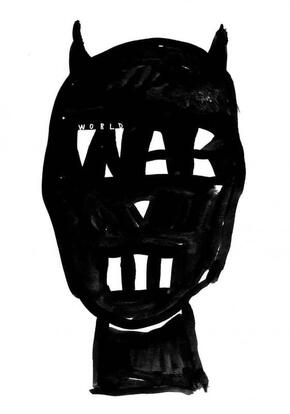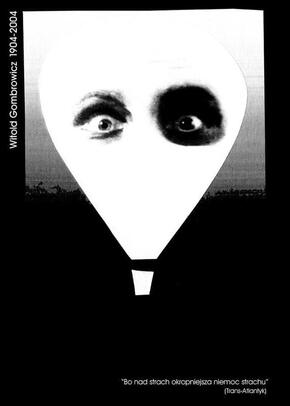Belarusian poster art: interesting and little-known
The golden collection of Belarusian posters is currently available online only
The Belarusian poster art is little-known to the common audience, poorly studied by experts and ignored by the state. The golden collection of the Belarusian poster, collected in the Belarusian Union of Designers, is the largest in the country; on its basis, one can create a specialized museum or a separate exhibition in an existing museum. But so far it is available only in electronic form.Poster museums are common practice in European countries, where collections are shown and exhibitions are held, for example, so that young poster artists can feel a path under their feet against the background of the classics. Such museums often host prestigious international biennials to compare the scale of local authors with the international level. They do research and publish books.
Our poster has long been ready for the international level, but we don't have a museum. Why?
Our poster of international scale
The history of the poster is actually quite short, starting in the 19th century with the advent of mass printing. The first posters were advertising, then theatrical ones appeared. The first poster with the Belarusian text was made by Ferdynand Rushchyts in 1913 in Vilnius. In the post-revolutionary period, propaganda centers appeared – that was "the propaganda of the socialism-building ideas and the popularization of the proletarian fine arts through art forms and images."This revolutionary time gave life to the bright pages in the development of the poster, associated with the activities of Kazimir Malevich and El Lissitzky in Vitebsk. Their suprematist-style posters are true evidence of the revolution in form, corresponding to their revolutionary content. Later, in the 1990s, this suprematist style was picked up by the remarkable Belarusian poster artist Alena Kitaeva, who, in addition to a series of posters, created playing cards and various exhibition objects.
Starting in the 1970s, the authors gradually moved away from the traditions of socialist realism and began to engage in formal research, taking into account the world trends. The result was immediately visible: the Belarusian poster received international recognition. The first to be noticed was Uladzimir Krukovski, who in 1972 was shortlisted for the International Biennale of Graphic Design in Brno. Later, the then young Belarusian poster artists Uladzimir Tsesler, Syargey Voychanka, Andrey Shalyuta won the main prize of the International Poster Biennale in Warsaw and the special prize of the UN Secretary-General for the poster "Year of the Tiger - Year of Peace". Recent graduates suddenly became stars.
The most concise...
The function of a poster is very simple — to convey information through a clear visual form - a font or a clear image. All in order to inspire the audience to take specific actions — political, consumer, in a word, the poster has quite a lot of functions.
A poster artist has to work within strict limits, their goal is conciseness. Therefore, they must become a virtuoso: every line is important. The special chic of the Belarusian poster is in its literary metaphors, and the coolest skill is tied to the subtle humor. How can I not mention Tsesler with his subtle play in the borderland between visual images and words. I should also mention Yury Tareeu, the master of the theater poster, it was impossible not to pay attention to his posters for the performances of the Kupala Theater, since the artist encrypted there the main symbolic essence of the play. “A poster, Tareeu explains, is a sign that brutally, emotionally and accurately conveys a message”.
In short, we can say that what Tareeu is doing is font hooliganism, he likes a rough, clumsy, but such an expressive drawing, which often seems scratched by an inept child's hand.
Why is it cool?
…the most expressive…
To understand this, it is worth mentioning the international trends that emerged in the countries of the socialist bloc in the 1960s. Firstly, it was a time of censorship, which contributed to a subtle game on the border between what was permitted and what was not permitted. Secondly, the technical capabilities were limited by low-quality printing, so the emphasis had to be on a brutal form. And another important point — cool artists appeared in the poster art. So the poster jumped from an applied function to high art, and the aesthetics, which the artists admired and where they borrowed various techniques, was grassroots aesthetics: children's scribbles, beer labels... The Belarusian artist Andrey Shalyuta learned from the famous Polish poster artist Henryk Tomaszewski. “Make two hundred sketches of your future work. Then choose the worst of them, he taught his students. It'll be the best." This paradox is the essence of the poster: it must grab attention. The Poles believed that they could draw attention with such a creaky natural aesthetic, in other countries there was another understanding of beauty. But it is hard to deny that the best Belarusian artists love this natural movement of the hand, love the literary metaphor based on a balanced play of word and image.
The type poster is developing in an exciting way; many interesting artists are working in it — these works are truly virtuoso. The calligrapher Pavel Semchanka, whose works are kept in the National Art Museum of Belarus, brought up a whole galaxy of type poster artists in our Academy of Arts. His letters speak, and this is not a metaphor, because from the word "forest", from the letters of this word, he can create a real landscape. His student Usevalad Sventakhouski modernized the font of Francysk Skaryna and based on it created many type compositions — both spectacular and poetic, and Genadz Matsur (also a student of Semchanka) uses letters as capacious and dynamic forms, like brushes with which any visual text can be written.
…and the most metaphorical art form
Today, posters have largely lost their direct social function, and advertising is arranged somewhat differently, let's say, less metaphorically. An order for a poster form has become a rarity, so today its most common type is the designer poster.
The poster art is supported by the academic environment, is a mandatory academic subject in the education of graphic designers. Posters are created for competitions and biennials: freeing themselves from the ideological shackles and dictates of the customer, they are developing their main qualities — creativity, conciseness and expressiveness. The qualities that are important for any kind of art, but for a poster they are decisive and defining.
Captions:
Link to photo: https://plakat.unid.by/kollekcii/zalaty-fond
Alena Kitaeva. The first Soviet truck. 1990.
Mikhas Anempadystau. "Make peace, not war." 2011.
Uladzimir Tsesler, Syargey Voychanka, Andrey Shalyuta. "For Peaceful Stars". International poster competition "In the name of peace on Earth". 1986
Yury Tareeu. "WORLD WAR III". Shortlist of the international poster competition "World Without Violence". Tehran. 2015.
Yury Tareeu. Witold Gombrowicz. 2003.
Usevalad Sventakhouski. Skaryna's letters. 2016
















